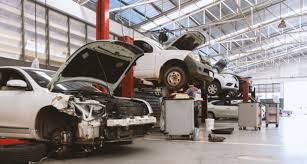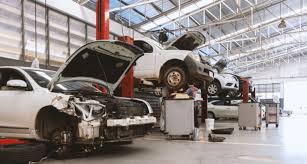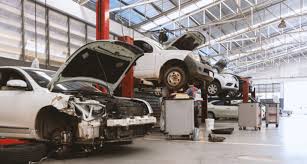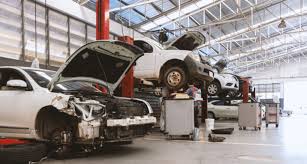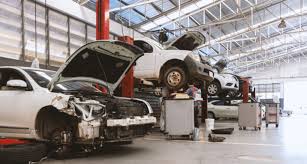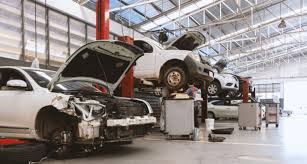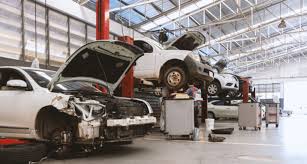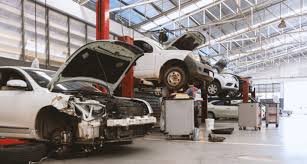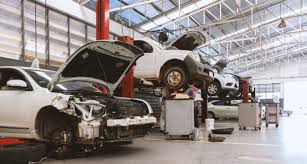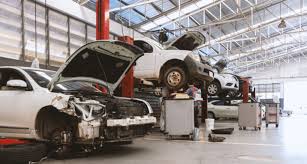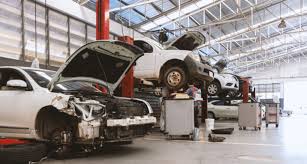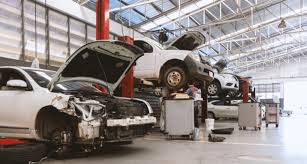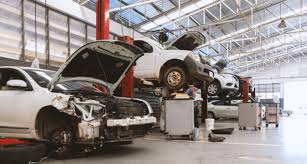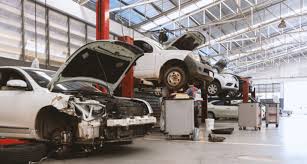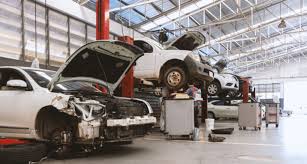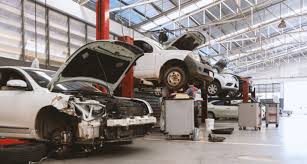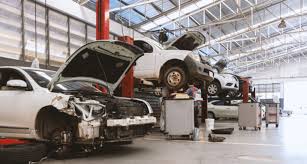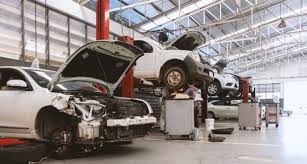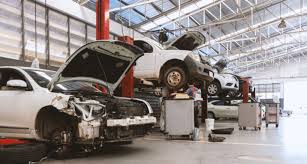Car Body Shop Accident Repair Insurance: Crash Damage Specialists
When vehicles collide, the aftermath extends far beyond twisted metal and shattered glass. For car body shops specializing in accident repair, each damaged vehicle represents not just a business opportunity, but a complex web of potential risks that could devastate an unprepared business. Understanding and securing appropriate accident repair insurance isn't just advisable—it's essential for survival in this high-stakes industry.
The Critical Nature of Accident Repair Work
Car body shops handling accident repair work operate in a uniquely challenging environment. Unlike routine maintenance or cosmetic modifications, accident repair involves working with vehicles that have suffered structural damage, often requiring complex restoration processes that can take weeks or months to complete. The specialized nature of this work creates exposure to risks that standard garage insurance simply cannot adequately address.
The financial implications of accident repair work are substantial. A single vehicle undergoing major collision repair might represent tens of thousands of pounds in parts, labor, and liability exposure. When multiple vehicles are in various stages of repair simultaneously, the total value at risk can easily exceed hundreds of thousands of pounds. This concentration of high-value work demands equally robust insurance protection.
Understanding Your Risk Exposure
Customer Vehicle Damage Risks
The most immediate concern for accident repair specialists is the potential for additional damage to customer vehicles while in their care. Vehicles arriving for collision repair are often in a compromised state, making them more susceptible to further damage during the repair process. Whether it's accidental damage during disassembly, improper handling of delicate components, or storage-related incidents, the financial consequences can be severe.
Consider a scenario where a luxury vehicle worth £80,000 suffers additional damage while undergoing repair work. Without appropriate insurance coverage, the repair shop could face not only the cost of rectifying the additional damage but also potential legal action from the vehicle owner and their insurance company. The reputational damage alone could prove catastrophic for a business that depends on trust and professional competence.
Professional Liability Concerns
Accident repair work requires specialized knowledge and skills that go beyond basic automotive maintenance. Structural repairs, frame straightening, and safety system restoration all demand expertise that, if applied incorrectly, could result in serious safety implications. Professional liability insurance becomes crucial when considering the potential consequences of inadequate or improper repair work.
The complexity of modern vehicles, with their integrated safety systems and advanced materials, means that even minor errors in repair procedures can have far-reaching consequences. A poorly executed repair that fails during subsequent use could result in injury or death, creating liability exposure that extends far beyond the immediate repair costs.
Business Interruption Risks
Accident repair shops face unique business interruption risks that stem from the specialized nature of their work. Equipment failures, such as frame straightening machines or spray booth malfunctions, can halt operations entirely. Unlike general automotive repair, where alternative equipment might be available, accident repair often requires specific, expensive machinery that cannot be easily replaced or substituted.
The loss of key personnel with specialized skills can also create significant business interruption. Qualified accident repair technicians are not easily replaced, and the training required to bring new staff up to the necessary skill level can take months. During this period, the business may be unable to accept new work or complete existing projects, resulting in substantial financial losses.
Essential Insurance Coverage Components
Comprehensive Motor Trade Insurance
The foundation of any accident repair shop's insurance portfolio must be comprehensive motor trade insurance that specifically addresses the unique risks of collision repair work. This coverage should extend beyond basic garage liability to include protection for vehicles in various stages of repair, from initial assessment through final delivery.
Key components should include coverage for vehicles while being moved around the premises, during test drives, and while stored on-site. The policy should also address the increased values associated with partially completed repairs, where the vehicle's worth may temporarily exceed its pre-accident value due to parts and labor investment.
Professional Indemnity Insurance
Given the technical complexity of accident repair work, professional indemnity insurance provides crucial protection against claims arising from errors, omissions, or negligent acts in the provision of repair services. This coverage should specifically address the unique aspects of collision repair, including structural work, safety system restoration, and compliance with manufacturer specifications.
The policy should cover both direct financial losses and the costs associated with defending against professional negligence claims. Given the potential severity of consequences from improper accident repairs, coverage limits should be substantial enough to address worst-case scenarios involving serious injury or death.
Product Liability Coverage
Accident repair shops must consider their exposure to product liability claims, particularly when installing replacement parts or modifying vehicle structures. If a repaired vehicle subsequently fails due to faulty parts or improper installation, the repair shop could face significant liability exposure.
This coverage becomes particularly important when dealing with safety-critical components such as airbag systems, structural reinforcements, or braking components. The integration of these systems requires precise adherence to manufacturer specifications, and any deviation could result in product liability claims.
Cyber Insurance Protection
Modern accident repair shops increasingly rely on digital systems for everything from customer management to insurance claim processing. The sensitive nature of customer information, combined with the financial data associated with insurance claims, makes these businesses attractive targets for cybercriminals.
Cyber insurance should address both the immediate costs of a data breach and the longer-term implications for business operations. This includes coverage for notification costs, credit monitoring services, legal expenses, and business interruption resulting from system downtime.
Specialized Considerations for Accident Repair
Storage and Bailment Coverage
Accident repair shops often store customer vehicles for extended periods, sometimes months, while awaiting parts or completing complex repairs. During this time, the vehicles remain the responsibility of the repair shop, creating significant bailment liability exposure.
Storage coverage should address risks such as fire, theft, vandalism, and weather damage. Given that accident-damaged vehicles may be more vulnerable to further damage, this coverage becomes particularly important. The policy should also address the unique challenges of storing vehicles in various states of disrepair, where standard security measures may be less effective.
Subcontractor Liability
Many accident repair shops work with specialized subcontractors for specific aspects of repair work, such as glass replacement, upholstery repair, or specialized paint work. While these relationships can provide access to specialized skills and equipment, they also create additional liability exposure.
Insurance coverage should address the potential for subcontractor errors or omissions to create liability for the primary repair shop. This includes ensuring that subcontractors carry appropriate insurance and that gaps in coverage are identified and addressed.
Environmental Liability
Accident repair work involves the use of various chemicals, paints, and solvents that can create environmental liability exposure. Spills, improper disposal, or contamination incidents can result in significant cleanup costs and regulatory penalties.
Environmental liability coverage should address both sudden and gradual pollution events, including coverage for cleanup costs, third-party claims, and regulatory fines. Given the increasing focus on environmental compliance, this coverage is becoming increasingly important for accident repair specialists.
Risk Management Strategies
Quality Control Procedures
Implementing robust quality control procedures can significantly reduce the likelihood of claims while potentially qualifying for insurance premium discounts. These procedures should cover every aspect of the repair process, from initial damage assessment through final quality inspection.
Documentation plays a crucial role in risk management, providing evidence of proper procedures and helping to defend against potential claims. Digital documentation systems can provide time-stamped records of repair progress, helping to establish timelines and demonstrate compliance with proper procedures.
Staff Training and Certification
Investing in comprehensive staff training and certification programs demonstrates commitment to professional standards while reducing the likelihood of errors that could result in claims. Training should cover not only technical skills but also safety procedures, customer service, and proper documentation practices.
Regular refresher training ensures that staff remain current with evolving repair techniques and safety requirements. This ongoing investment in human capital can provide significant returns through reduced claims frequency and improved customer satisfaction.
Equipment Maintenance and Calibration
Proper maintenance and calibration of repair equipment is essential for both quality work and risk management. Frame straightening equipment, measuring systems, and spray booth equipment all require regular maintenance to ensure accurate and safe operation.
Documented maintenance schedules and calibration records provide evidence of proper equipment care, which can be crucial in defending against claims alleging equipment-related errors. Regular maintenance also helps prevent equipment failures that could result in business interruption.
Claims Management and Response
Immediate Response Procedures
When incidents occur, immediate response procedures can significantly impact the ultimate cost and outcome of claims. Staff should be trained to secure the scene, document the incident, and notify appropriate parties promptly.
Photography and detailed incident reports provide crucial evidence for claims handling. Digital systems can facilitate rapid documentation and transmission of incident information to insurers, potentially speeding the claims process and improving outcomes.
Customer Communication
Effective communication with customers during incident response can help maintain relationships and potentially reduce claim severity. Transparency about what occurred, combined with clear explanations of remedial actions, can help preserve customer confidence.
However, communication must be carefully managed to avoid admissions of liability that could complicate claims handling. Staff training should emphasize the importance of factual reporting while avoiding speculation about causes or responsibility.
Working with Insurers
Developing strong relationships with insurers and their representatives can facilitate more effective claims handling. Understanding insurer expectations and procedures can help ensure that claims are processed efficiently and fairly.
Regular communication with insurance representatives, including claims adjusters and risk management specialists, can provide valuable insights into industry trends and best practices. This ongoing dialogue can help identify emerging risks and opportunities for improvement.
Cost Considerations and Budgeting
Premium Factors
Insurance premiums for accident repair shops are influenced by numerous factors, including the size and scope of operations, claims history, risk management practices, and coverage limits. Understanding these factors can help businesses make informed decisions about coverage levels and risk management investments.
Location can significantly impact premiums, with shops in high-crime areas or regions prone to natural disasters facing higher costs. The types of vehicles typically serviced also influence premiums, with luxury and exotic vehicle specialists facing higher rates due to increased values at risk.
Coverage Limits and Deductibles
Selecting appropriate coverage limits requires careful consideration of potential exposure levels. While higher limits provide greater protection, they also result in higher premiums. Businesses must balance the cost of coverage against the potential consequences of inadequate protection.
Deductible levels represent another important consideration, with higher deductibles typically resulting in lower premiums. However, businesses must ensure that deductible levels remain manageable given their financial resources and cash flow patterns.
Return on Investment
Insurance should be viewed as an investment in business continuity rather than simply a cost of doing business. The protection provided by comprehensive coverage can enable businesses to take on larger, more profitable projects with confidence.
The peace of mind provided by adequate insurance coverage can also enable business owners to focus on growth and development rather than constantly worrying about potential catastrophic losses. This psychological benefit, while difficult to quantify, can provide significant value.
Industry Trends and Future Considerations
Technological Advances
The automotive industry's rapid technological advancement creates both opportunities and challenges for accident repair specialists. Advanced driver assistance systems, hybrid and electric powertrains, and lightweight materials all require specialized knowledge and equipment.
Insurance coverage must evolve to address these changing risks, including the potential for software-related issues, high-voltage electrical systems, and specialized material handling requirements. Staying current with these developments is essential for both operational success and appropriate risk management.
Regulatory Changes
Evolving safety regulations and environmental requirements create ongoing compliance challenges for accident repair shops. Insurance coverage should address the potential for regulatory violations and the costs associated with maintaining compliance.
Changes in vehicle safety standards may also impact repair procedures and liability exposure. Staying informed about regulatory developments and ensuring that insurance coverage remains current with changing requirements is essential for long-term success.
Market Consolidation
The accident repair industry continues to experience consolidation, with larger operators acquiring smaller shops to achieve economies of scale. This trend creates both opportunities and challenges for independent operators.
Insurance considerations for businesses considering acquisition or merger include ensuring continuity of coverage, addressing potential gaps in protection, and managing the increased complexity of larger operations. Professional advice becomes particularly important during these transitions.
Conclusion
Car body shop accident repair insurance represents a critical investment in business protection and continuity. The specialized nature of collision repair work creates unique risks that require equally specialized insurance solutions. From customer vehicle protection to professional liability coverage, comprehensive insurance protection enables accident repair specialists to operate with confidence while protecting against potentially catastrophic losses.
The key to effective insurance protection lies in understanding the specific risks associated with accident repair work and selecting coverage that addresses these unique exposures. Working with experienced insurance professionals who understand the automotive repair industry can help ensure that coverage remains appropriate and cost-effective.
As the automotive industry continues to evolve, accident repair specialists must remain vigilant about emerging risks and ensure that their insurance protection evolves accordingly. The investment in comprehensive coverage today provides the foundation for sustainable business success tomorrow.
For accident repair specialists seeking to protect their businesses against the unique risks of collision repair work, the time to act is now. The cost of adequate insurance protection pales in comparison to the potential consequences of inadequate coverage. Contact Insure24 at 0330 127 2333 to discuss your specific needs and ensure your business has the protection it deserves.


 0330 127 2333
0330 127 2333
